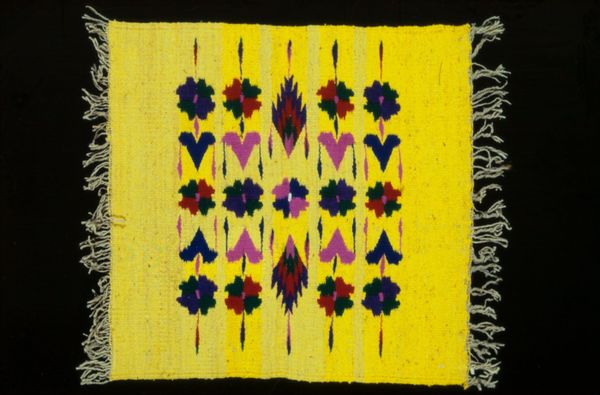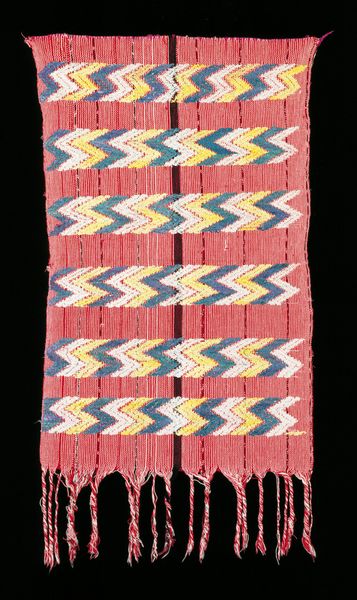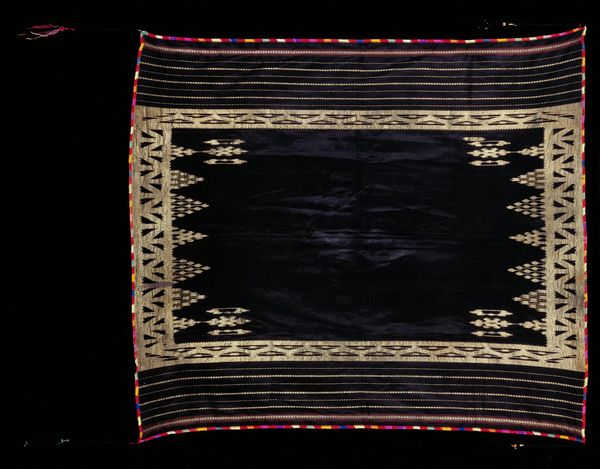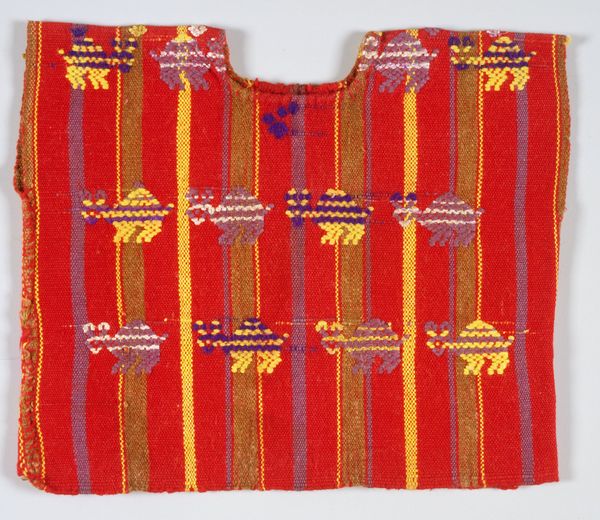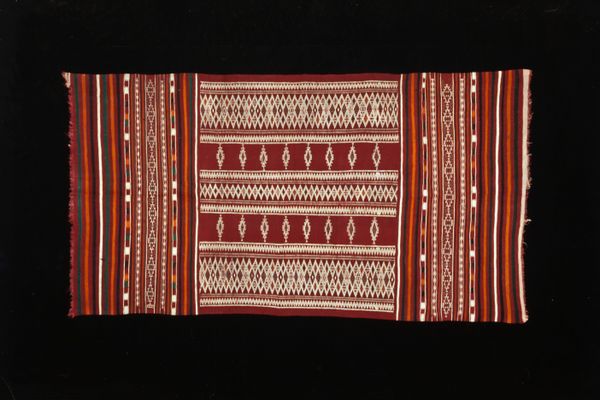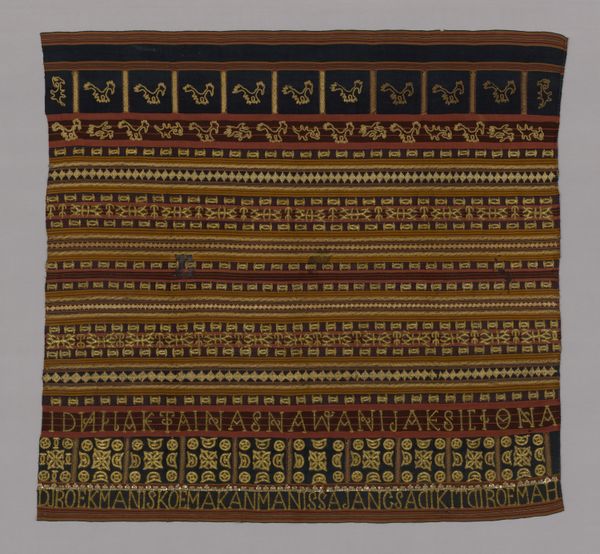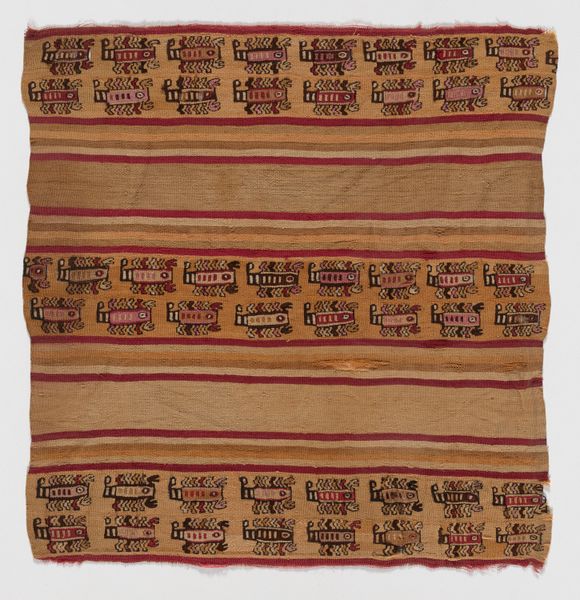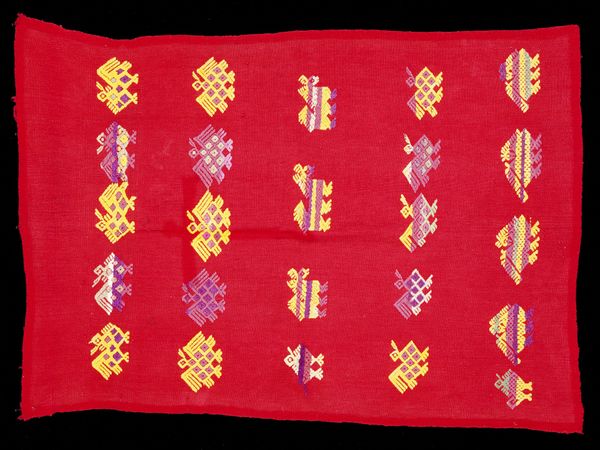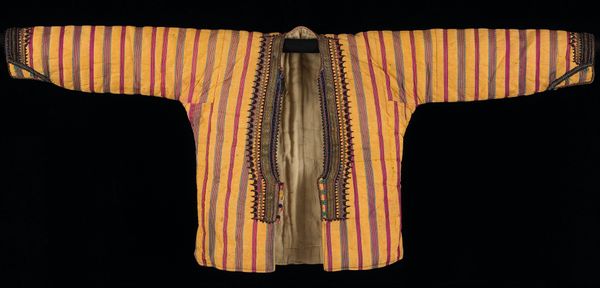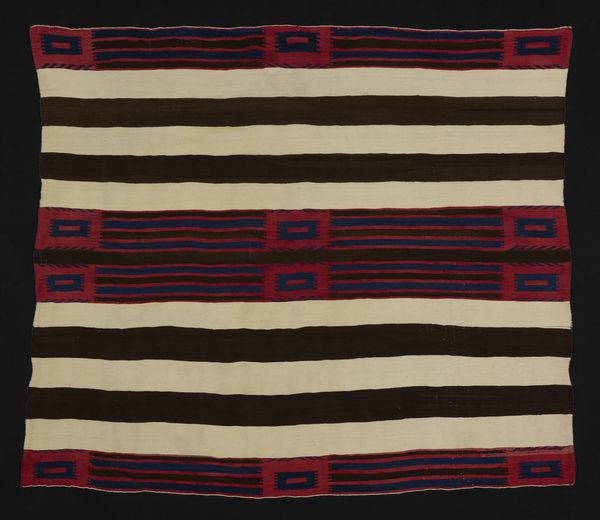
fibre-art, weaving, textile, cotton
#
african-art
#
fibre-art
#
weaving
#
decorative
#
textile
#
geometric pattern
#
geometric
#
cotton
#
decorative-art
#
decorative art
Dimensions: 74 5/16 x 68 in. (188.75 x 172.72 cm) (without fringe)
Copyright: Public Domain
Curator: This splendid example of Nupe weaving, known as a "Man's Wrapper," dates from the 19th to 20th century. It’s a vibrant textile composed of cotton. The piece comes from Nigeria and is now held here at the Minneapolis Institute of Art. Editor: My first thought is just how celebratory it feels! The colours really pop, and those tassels give it such a dynamic energy. It reminds me of festival decoration. Curator: Yes, exactly! These wrappers weren't merely clothing. They were potent signifiers of status and identity for Nupe men. The geometric designs aren't arbitrary, each carries symbolic meaning and represents the wearers status. Editor: The geometric patterning is so striking. Do you think certain shapes would carry more weight in this kind of visual language? I'm fascinated by how forms, in this case the diamonds, zigzags and M shapes, repeat through time to be almost primordial. Curator: Absolutely. Weaving traditions in Nupe culture, like in many West African societies, were deeply gendered. This piece tells a nuanced story about Nupe social structures, production and gender roles. Nupe weaving held significant economic power for men; the weavers also held political roles and ties, often with deep ties to royal authority and control. Editor: So it becomes more than just a garment; it's an artifact imbued with economic and political threads that have quite literal ties with its male weaver. Curator: Precisely! By examining textiles like this Man's Wrapper, we start to unpack the narratives woven into the very fabric of Nupe society. These vibrant materials represent so much more than ornamentation. Editor: Reflecting on it all, the "Man’s Wrapper" emerges not only as visually captivating textile but as an incredible focal point that embodies an entire cultural network!
Comments
No comments
Be the first to comment and join the conversation on the ultimate creative platform.

